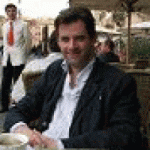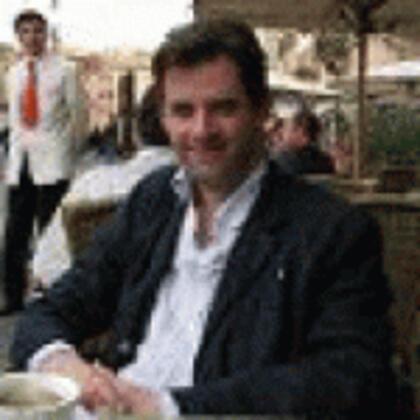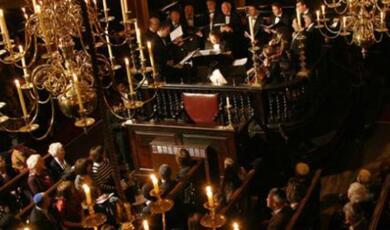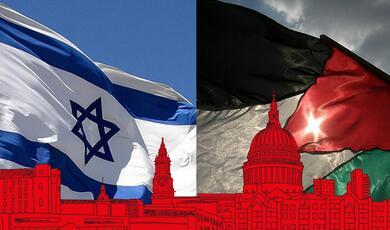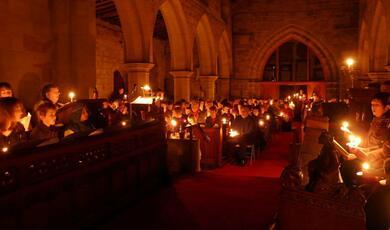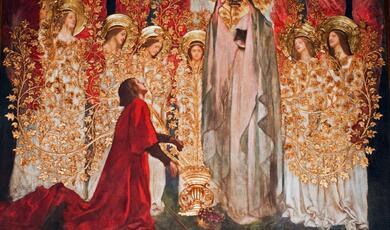God's Good Order and the Artist's Patterns
Share
- Details
- Text
- Audio
- Downloads
- Extra Reading
For centuries of western history, the beauty of art was conceived as a response to, and a reflection of, the cosmic artistry of a good God, who patterned all things well. Aesthetic order was therefore a manifestation of cosmic order, and beauty an expression of the good providence of a benevolent God. In the modern period patterns have seemed like the consoling creations of people worried that they live at the mercy of an arbitrary universe. What do patterns in art (pre-modern and then modern) tell us about our changing perspectives on the world we live in?
This the third in a series of three lectures on Patterns. The other lectures are as follows:
How the zebra got it its stripes by Professor Adrea Sella
How mathematicians think about patterns by Professor Ian Stewart
Download Text
14 March 2013
God’s Good Order and the Artist’s Patterns
Professor Ben Quash
For centuries of western history, the beauty of art was conceived as a response to, and a reflection of, the cosmic artistry of a good God, who patterned all things well. Aesthetic order was therefore a manifestation of cosmic order, and beauty an expression of the good providence of a benevolent God. In the modern period patterns have seemed like the consoling creations of people worried that they live at the mercy of an arbitrary universe. What do patterns in art (pre-modern and then modern) tell us about our changing perspectives on the world we live in?
We need patterns, and we also like patterns.
Certain sorts of pattern give us the power to predict what will come next, and to adapt accordingly – and this can contribute hugely to our well-being. Seeing patterns in the behaviour of the elements, and of other natural forces - and seeing patterns in the behaviour of one another – these things have been crucial to humankind’s success as a species. Moreover, the use of patterns in the functional things we make (the arches that support a viaduct, for example, and that distribute its weight) will often be essential to making them functional and, often, safe. The patterning of arches in what you see here is crucial to the survival of those who cross it.
As it happens, these patterned arches are also – in my view – very beautiful; but my guess is that the architect of this viaduct did not have their beauty as his principal aim when he designed it. A beautiful viaduct that you couldn’t actually use to cross the valley would be a folly, and a dangerous one at that.
It may of course be that the reason we like patterns is because we need them. This is something about which psychologists, and maybe also evolutionary biologists, are likely to have views. This lecture, however, is going to ask a different set of questions; ones in which my own discipline of theology has had a perennial interest. Those questions are: what are some of the roles that pattern has played in art, and what are some of the key ways in which artists in Western culture have understood their art’s use (and occasionally rejection) of pattern as a way of responding to God? Please notice my judicious use of the word ‘some’ here. The topic is vast and quite impossible of coverage in just 45 minutes! It’s also far too big a topic to be covered authoritatively by any one person. So please treat what I am about to say as a series of exploratory proposals which invite all sorts of further qualification and refinement. And perhaps you will be able to begin to do that necessary qualifying and refining in your comments and questions at the end.
One of the great dilemmas of the modern period is our loss of faith in the relationship between the good, the true and the beautiful. Our ancestors in pre-modern times – by which I mean pre-16th-century times – simply assumed a connection between them. It was something they would have taken for granted, without feeling the need to justify or prove it. But we have since begun to doubt that there is a necessary connection, and we can’t imagine anything that would prove such a connection. There are many reasons for this onset of doubt, but a significant one is the increased tendency of us ‘moderns’ to locate concepts like beauty in the eye of the beholder – in our own minds – rather than ‘out there’, as it were, in an objective order of things. Something is ‘beautiful for us’ rather than ‘beautiful in itself’. Moreover, on this account, there cannot be any intrinsic link between the beautiful and the good or the true – only the arbitrary associations I choose to make between things I like and things I value, without any appeal to their existence independently of me.
What makes us and our dilemmas so very different from those of the medieval period is that medieval people – including the most brilliant intellectuals of those centuries – thought that beauty and goodness – like truth, and like being itself which was the reality in which all the others were grounded – were transcendental realities. That is to say, they were intrinsic and necessary aspects of each existent thing insofar as that thing participated in the being and purpose which God gave it. A true thing was a true thing, a good thing a good thing, and a beautiful thing a beautiful thing, regardless of whether a human being was there to look at it, experience it, or form an opinion about it. The true, the good and the beautiful were properties of being – transcendental properties of being.
Such being is not something we make or guarantee. Being is made by and guaranteed from somewhere else – by Another. And if that creative, guaranteeing Other is a good God, then whatever is is also good, true and desirable (which is to say, attractive, or beautiful), by virtue of its existing at all. It all comes from the same place (and that place is other than the inside of our heads). For anything to be is for it to be from the self-communicating goodness of God. Being and goodness are thus inseparable, mutually ‘convertible’, and are grounded together with the true and the beautiful in God, who is ultimate reality.
This is the sort of idea that we find emerging in the work of the mystical writer Pseudo-Dionysius the Areopagite (writing in about 500, probably in Syria), and after him, in a more codified way, St Bonaventure (c. 1217-74), who speaks as follows:
Beauty . . . is the great creating cause which bestirs the world and holds all things in existence … [It] is . . . the Cause toward which all things move, since it is the longing for beauty which brings them into existence. . . . The Beautiful is . . . the same as the Good, for everything looks to the Beautiful and the Good as the cause of being, and there is nothing in the world without a share of the beautiful and the good . . . This – the One, the Good, the Beautiful – is in its uniqueness the cause of the multitudes of the good and the beautiful.[1]
The medieval Christian Church was governed by this belief. In this, of course, it inherited a powerful Greek tendency (in which Pythagoras (5th-4th century BC) was a key influence) to argue for a universe regulated in every respect by number and by ratios. In Pythagoras’s words, ‘all things are formed in accordance with harmony’. These ratios are as evident in the harmonious relations between musical notes as they are in the dimensions of admirable architecture.
The thinkers of the Middle Ages – influenced by Augustine’s treatise on music (De Musica, which in being about music is also about mathematics, and in being about both of these is also about divine providence), as well as by the writings of Boethius – were consistent advocates of the idea of cosmic proportion and pattern. The 12th century theologians of the school of Chartres saw in the cosmos an extraordinary, complex and miraculous consensus among things; a mutual coherence and reciprocity that sustained their overall union. The cosmos – like the human being, to which it was often compared – had a single soul, and a single destiny. Meanwhile, a single divine love held it in being and guided it in the right ways. God’s good order is the opponent and bulwark against primordial chaos.
Even ugly things could be part of this harmony of the world. Umberto Eco points this out, seeing a good example of the sort of argument in the 9th-century thinker John Scotus Eriugena, who says that even contrast can be incorporated into a larger proportioned scheme, and can help to serve a more extended sense of beauty:
Beauty … also springs from the contrast of opposites, and thus even monsters have a reason and a dignity in the concept of Creation … alongside [evil], good shines out all the better. [Umberto Eco, On Beauty, 85).
Kilpeck Church in Herefordshire shows this dazzlingly. It shows a mysterious sharing and bonding between all created things. This is participatory beauty – the beauty of things connected, relating, displaying their ‘at-homeness’ with each other, all sharing in a hymn of praise in which there is both light and shadow; abstraction and figuration; depth and surface.
The greatest of all medieval theologians, Thomas Aquinas gives the idea of proportion especial importance and influence in his thought. We see this in his love of the word conveniens, which we can best translate as ‘aptness’. The idea of aptness permits an application of the idea of beautiful pattern as much to an ethical context as to an aesthetic one. Both artistic productions and holy actions are ways of mirroring and joining in with the patterns, the relations between things, that are God’s intention for his creation. ‘[V]irtuous actions’, writes Eco, describing Aquinas’s views, ‘bring about correctly proportioned words and deeds in accordance with a rational law, and so we must also talk of moral beauty…’ (Eco 88).
Beauty is the mutual collaboration between things, and so we can define as ‘beautiful’ the reciprocal action of stones that, by supporting one another and thrusting against one another, provide a building with a solid base. It is the correct relationship between the intelligence and the object that the intelligence comprehends. In other words proportion becomes a metaphysical principle that explains the unity of the cosmos. (Eco 88)
There is of course a major issue lurking beneath the surface of such claims as these, and that is whether – even if you do accept that works of art should work to correspond in some way to a God-given order in things by striving to be beautiful (and few artists today will accept even this) – it is because they are patterned that they are beautiful. Pattern’s relation to beauty is not to be taken for granted, and this is because ideas of beauty themselves are constantly changing, and only certain strands of aesthetic thought in certain periods of history have celebrated pattern – with which we might also associate ideas of proportion, symmetry, harmony and so on – as the quintessence of the beautiful.
As Nietzsche would point out hundreds of years later, in the late 19th century, the Greeks did not only give us that kind of beauty which depends on pattern, proportion, and regular form (the kind of beauty he calls ‘Apollonian’); it gave us a different and intoxicating kind of beauty which we find in flux, song, and wild dance (the kind of beauty he calls ‘Dionysian’). I want to come back to this when we look at some works of art from the modern period.
Pattern in art is not, of course, just a matter of imitation of what is found in nature. It is also a sort of invention – which means both discovery, in an old fashioned usage, and also creativity, in its more typical modern usage. This would have been acknowledged fully in the medieval period. But – as is often remarked – the inventiveness of artists seems to become more pronounced and more flamboyant (and certainly less anonymous) in the Renaissance.
I want to turn now to three ways in which artists in the Christian tradition have used pattern creatively in order to illustrate theological truths. They are quite diverse examples, but together they show the power of pattern to be a sign of something beyond itself. One case has a powerful effect, though one I disapprove of on theological grounds. The other two I admire a good deal more.
The Last Judgement
The magnificent mosaic of the Last Judgement in Torcello Cathedral, dating from around the 13th-14th centuries, reflects from a variety of angles on the last things, drawing together a panoply of biblical and traditional images into a composite picture.
There is pattern in this mosaic, but it hasn’t resulted in an inappropriate imposition of a neatly patterned vision of how heaven and hell interrelate. More specifically, it hasn’t resulted in a false symmetry between them of the sort that we see in the Last Judgements of, say, Tintoretto or Michelangelo. While these are works of painterly genius, they are not good Christian theology! The doctrines of heaven and hell in Christianity do not perform the same function as each other, and are not a sort of quasi-geographical map of the afterlife. The idea of 50% of humanity going one way and 50% going the other is theologically presumptuous, even if visually satisfying. The pattern is too clear, and assumes a sort of God’s eye view. Torcello’s ambiguity has much to commend it by contrast.
Perspective and the theological suggestiveness of the vanishing point
As is well known, the artists of the Renaissance began to take a particular interest in perspective, and to use it as a prized tool in their art. The treatises of the Florentine Leon Battista Alberti and others, spend a great deal of time exploring and explaining its principles. It is often remarked that this is the beginning of a more mathematical, rationalistic, humanistic science of painting, and the patterns of squares – the receding grids – that Alberti encouraged artists to use in structuring the space in their works may seem to have nothing religious about them at all. To some extent that’s true – and yet they can also be used to signal something more.
When we see a picture of the annunciation to the Virgin, like this one by Lippi, we are seeing a moment where infinity also occupies a point in space. The infinite divinity of the Son of God takes up residence in the hidden recesses of the Virgin’s womb. What better sign of that than the vanishing point, which is a point but also an infinity? Pattern becomes religiously eloquent.
Michelangelo’s Entombment
In this glorious painting, Michelangelo gives us many mysteries to ponder. One of them is the fact that this Christ is unbloodied. He is dead, but has no wounds. And yet, I am intrigued by the way that his body, held as it is in the space between the two figures to his left and right, seems to be cupped in a chalice. The figures lifting him up have patterned the space in a way that is deeply meaningful, especially in conjunction with an altar; the blood of Christ is made present, though in an unexpected way.
As the Renaissance heralds the beginnings of a very different western world, and a more human-centred one, there remains a power in the Christian claim that the non-human natural world and human beings are (to recall Aquinas’s language again) mutually collaborative; fitted to one another appropriately in some way. We see this in a work like Bellini’s Agony in the Garden, in which it is almost as though the landscape has patterned itself to accommodate its human inhabitants.
It can work the other way around as well. Human beings can and do accommodate themselves to their natural surroundings, with the help of their patterns, without seeming to betray it. Here too, there can seem to be a sort of collaboration.
We may see this receptivity and reciprocity in a garden like that at Sissinghurst in Kent. The fact that human ideas help to order the non-human nature there does not do violence to the nature, as it might have done if there were only regimented borders and relentlessly geometrical clipped shrubs; on the contrary there is a sense that nature in its interactions with the human loves that are at work in the garden is being enabled in some special way. Sissinghurst, like the Bellini painting, may help us to appreciate what Samuel Taylor Coleridge meant when he said that art is beautiful when it ‘makes the external internal, the internal external’; when we find what we have discovered inside us actually outside us too. The respectful affinity between different living things displays the ‘at-homeness’ that I think the language of beauty has sometimes sought to name and express.
Often, of course, a sense of affinity like that is something that seems beyond our grasp. And it is here that we turn much more definitely to the modern period, asking what has been the fate of pattern in the work of modern artists who are more often than not unpersuaded by religious beliefs about the good order and benevolence of the world.
What is proposed by many modern artists and commentators on art is a celebration of the merely subjective value of art. The subjective can be made so complete a criterion of value that public standards of beauty, truth or goodness are simply bypassed as irrelevant. No ‘common good’ is articulated, in artistic terms. Just like individual religious experience, individual artistic experience gets privatised, and denies the need for any other legitimation. Here lies the biggest tension between the ethos of modern aesthetics and that of Christian theology, and the root of the reason why to the modern mind the idea of there being any link between art and God seems an extremely peculiar thought.
The modern crisis – if we accept that it is a crisis – is therefore the result of the loss of a certain kind of faith in the actual coherence and benevolence of the world, and in the possibility that we might actually be capable of experiencing it in a way that is genuinely shared by others – that their good might also be my good; and that what I desire might actually be compatible with what they desire, without competition or violence. Ours is a disenchanted world. It is no longer the world in which Dante wrote his Divine Comedy, which is the story of a great ascent into divine reality, where there is a perfect congruence between the most perfect Good and the most perfect Beauty – where the most pure is also the most passionately desirable. Our passions are disenchanted passions – usually directed at things that seem idiosyncratic and perhaps a little bit grubby. And we don’t dare talk much about the transcendentals any more.
Phillip Blond, he theologian and political thinker, has written well on this. He contrasts the modern situation with the medieval world, in which:
art was seen as extolling, and to some extent extending, the relationship that God had to nature and man. Art mediated and further crafted [our] receptions . . . of God’s universal order of creation. The medieval notion of art was anything but autonomous. The beautiful was the incarnated form present – however incipiently – in all creation. The beautiful therefore had its place in the world as part of the order and character of all creatures. Beauty was objective in that it was imprinted in the form of the created world . . . For the medieval world, human aesthetic achievement was only possible insofar as it mirrored divine beauty.
It is the idea of art’s autonomy that most distinguishes the modern view from the medieval, as outlined by Blond. This can be seen in the independence accorded to art in liberal secular culture. Many assume modern art must be automatically granted a self-governing sphere in order that it can function free of external restraints. Yet this poses several problems. To argue that modern aesthetics presupposes the fundamental autonomy of art, is to argue for art’s separation not only from God but also from any external source of value or governance. Blond writes:
Contemporary theory sees no relationship between art and morality or truth, let alone God. Art is not good or true or even beautiful. It is just art. Aesthetic practice provides its own grounds and requires no other apology. Self-proclaimed ‘important’ movements in the visual arts actually account for their worth via an insistent refusal of public standards of form and beauty. Instead the modern painter prefers to think of herself as radical, shocking and, most importantly of all, innovative . . . In short, criteria for judging the aesthetic value of modern art are thought to be personal, subjective and somehow invented along with the work of art itself. Critics may argue that these invented rules exist parasitically on the public frameworks they refuse. Yet this riposte also fails to dislodge the autonomy of modern art, as all public works now appear to be as relative, and as unjustifiable, as the private values they initially hoped to mitigate.
How did we get here from there, so to speak? How did we get from the objective to the subjective in art?
One reason may of course have to do with industrialization. The technological tools that man progressively made available to himself in the 18th and 19th centuries ran on pattern and served pattern – at least in the sense of the faithful and predictable replication of a prototype. Our culture, and that includes our artists, live under the sway of this technocratic world still. And when pattern begins to seem more a feature of a machine-governed world than a God-governed world, perhaps it isn’t so surprising that art develops as a sort of reaction to it. The hand-made, the anomalous, the one-off – even if they have patterns within them – take on heightened value. Art, rather than being a bulwark against chaos (as in medieval times) becomes a bulwark against sameness.
But there were other developments afoot too which help to explain why art has moved so far in the modern period from its medieval heritage. John Ruskin may have wanted to assert that nature’s patterns sing the praises of God, and even show us aspects of God’s own nature, but others – like Oscar Wilde - disagreed. We surely hear a bit of Wilde himself in one of his characters when he exclaims: ‘Nature is so uncomfortable […] so indifferent, so unappreciative. Whenever I am walking in the park, I always feel that I am no more to her than the cattle that browse on the slope, or the burdock that blooms in the ditch.’
Though humorous, this sentiment captures quite a profound modern doubt, or unease, about whether we are either significant or safe in a world so apparently capable of arbitrary cruelty or disorder. This arbitrariness and disorder is discernible in the nature within us as well as the nature around us. The devastation of the global wars of the early 20th-century will make a relish of pattern seem like escapism into an artifice; a comfort zone for the mind and the senses. Good art must be honest, and to be honest it must not console.
But – though Blond’s critique has undeniable force - it is polemical, and it doesn’t catch all modern art in its net, to the extent that much of it (as you will see if you wander around a collection like Tate Modern) does at the very least see itself as a matter of response and not just assertion. This response may be to nature, or to other human persons, or to social change, or something else again. But where there is response, there is some notion of accountability or adequacy to what is beyond the artist. And there is often still pattern. In the final part of this lecture, I want to consider some local examples of this, and show that the contrast between medieval and modern cannot be drawn quite so starkly as Blond draws it. We are faced more with complexity than contrast here – and there is a lot to enjoy and celebrate in the complexity.
Iwona Blazwick and Frances Morris, writing in Tate Modern: The Handbook, importantly expose (and resist) the way that the authority of the museum tends to transform ‘History into Nature’, in other words to elevate something historical (a work of art’s appeal or importance) into something trans- or supra-historical. They write: ‘The international, civic and social status of the large institution ensures that the art it collects comes to represent a canon, an official pantheon of greatness’ (Blazwick and Morris, 30). Such institutions create ‘master narratives which assert aesthetic values and historical accounts as objective, autonomous and universal’.
One of the things that, as a modern and not a medieval theologian, I appreciate in contemporary discussion of the arts is the emphasis on relativising and contextualising works of art, rather than imbuing them with some sort of absolute or timeless status as ‘great’ works. Theology ought to have a healthy resistance to claims to absolute and timeless authority (un-self-critical claims, which do not admit the provisionality and contingency of their foundations). The messiness of history is not avoidable from a Christian perspective; it needs instead to be worked with, in the belief that blessing can be disclosed in it.
But this does not of course mean that there is no place for pattern at all. It will simply be part of a more complex, tentative, perhaps provisional way of responding to the world as we see here in the delicate lines and tracery of David Jones’s pencil and watercolour drawings. Non-human nature is still something to which we can be accommodated, and in which we can find deep pleasure, but there is no sense in these paintings that we are being presented with a map of cosmic order. There is, in Vexilla Regis, for example, a sense that the world and its history has some sort of watermark (the three crosses of Golgotha, rendered as trees), but this world is also littered with rubble and ragged, particular, unique loose ends. Particulars, not patterns, are the artist’s principal concern – but it is in these particulars that a sort of sacramental sense of the divine giver and sustainer of the messy, violent and enchanting world can communicate itself.
The world as we know it is a form of reality which is, so to speak, spread out or distributed. It is not everything and all at once, but various and time-laden, in which things are different and differently phased in time. And we would expect that the God who operates in such a world does so in a distributed, time-laden way, through the shaping of this distributed reality and through the phasing of its time. (Daniel W. Hardy, unpublished sermon)
In this distributed, time-laden world of ours, nature ‘clumps’ itself in certain ways, as things of different kinds which are related to each other in complex ways and through events which follow complex dynamic patterns we call ‘history’. These ‘clumps’ and ‘movements’ are what we are, and are surrounded by.
But these ‘clumps’ and ‘movements’ can be captured and portrayed by human beings; that is one of the truly unique features of human being. The world and history which we are is always being summarized or concentrated by human beings, as one finds them doing even in prehistoric cave paintings or in dance-forms or in our memories. They do so in many ways. Some are ‘flat’, on one plane. Some are multidimensional, as with sculptures. Some are ‘spatial configurations’ in which people live and move, as with buildings and cities. All of these involve movement somehow, but some are more explicitly time-laden.
I want to finish with Henri Matisse’s Joy of Life: a work that is enigmatic, sensual, vivid; it expresses the earthly pleasures of curiosity, companionship, dance, relaxation, delight in nature, music, drawing, love – all in a natural clearing which is framed by arching trees. Matisse may be said simply to have ‘decorated’ reality here; but I think he has done more than that. He has created a concentrated space in which reality is shown to us in a heightened register, in its dynamism and potential. And he seeks to engross us in this concentrated space, overcoming our tendency to want to stand ‘outside’ the painting as mere ‘observers’.
A more intense historical sensibility than – perhaps – the pre-modern world had, and a greater discomfort with the way that pattern can be coopted and deadened by a modern logic of sameness, have produced in modern artists a more idiosyncratic and bespoke relationship to pattern. There is also a needful suspicion of the way that pattern can console, and in so doing protect us deceptively from some of the truths of our world and our own natures. But pattern persists.
Matisse has patterned this space, though not with some rigid Apollonian template in which ratio is the only means to the manifestation of God. He has instead captured something at once Apollonian and Dionysian: the multidimensional dynamism of the world, expressed through line, colour, distortion and vibrating forms. And he experiences in this attention a lightness of spirit which he then communicates to the engrossed viewer – to us. It is a lightness of spirit – a joy in life – which is rarely found in the narrow formalisms of modern existence and rationality. And so the painting opens room for deep meditation on the dynamics of God in human life as a whole – for Christianly speaking, there is no sharp distinction between the ‘lightening of spirit’ we find here and the Holy Spirit through which the joy of life rises in the human heart. This may, as a result, be a more religious painting than any number of worthily-rendered scriptural scenes.
© Professor Ben Quash 2013
[1]Dionysius the Areopagite, Divine Names, ch. 4, p. 77.
This event was on Thu, 14 Mar 2013
Support Gresham
Gresham College has offered an outstanding education to the public free of charge for over 400 years. Today, Gresham College plays an important role in fostering a love of learning and a greater understanding of ourselves and the world around us. Your donation will help to widen our reach and to broaden our audience, allowing more people to benefit from a high-quality education from some of the brightest minds.


 Login
Login
